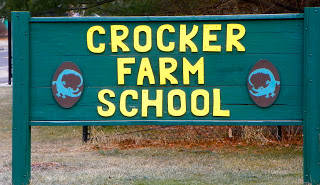Issues & Analysis: Surprising Implications For Which Elementary School Students Will Attend After New School Is Built

We need to talk about something that hasn’t been discussed publicly related to the elementary school building project: enrollment implications of consolidating from three to two elementary schools. There are two important effects that I believe many people are not aware of:
- Many families who think their children will be attending the new or completely renovated school don’t realize their children will likely be going to Crocker Farm.
- If the enrollment projections by the state are close to accurate, Crocker Farm is going to be very crowded as soon as the transition to a two-elementary-school system happens.
The Massachusetts School Building Authority (MSBA) does an analysis of enrollment trends as part of all building projects in their pipeline. Based on Amherst’s application for a consolidation of Fort River and Wildwood schools with grade reconfiguration to K-5 and no more than 600 students, they projected elementary enrollment in Amherst through 2030. Their figures predict a steadily increasing enrollment from now through the 2029-2030 school year. They used an average enrollment of around 950 K-5 students and a capacity of Crocker Farm to hold 375 students to produce the approved enrollment of 575 students at a consolidated school. However, their own data show that by 2029 there would actually be around 1020 K-5 students, 70 more than the 950 average. The graph below shows historic data from the Department of Elementary and Secondary Education (DESE) from 2012 to now in blue and the MSBA-generated data in black through 2026 and in red after that, when the consolidated school is expected to open.
The current elementary system distributes students among three schools, or districts. Under the two school system, the percentage of K-5 students at Crocker Farm will increase from 32% to 40% of the district total (375 of 950) while those assigned to Fort River/Wildwood will decrease from 68% to 60% of the total (575 of 950). The redistricting required for this transition will result in a shift away from the consolidated Fort River/Wildwood district to Crocker Farm. In 2026, the first year that the new 575 student school and two-school system is anticipated to open, that will be 60 students and that number will rise to 120 students by 2029.
To be sure, a school built for 575 students will be able to take on some extra students by increasing class size, but this will not be sufficient for what could amount to an additional 5 to 6 classrooms full of students. Furthermore, this would breach by a large margin the superintendent’s promised upper limit of a 600-student school. This may surprise families living closer to the southwest part of town whose children currently attend either Wildwood or Fort River because children in these areas may be assigned to Crocker Farm once the consolidated school is built.
The graph below shows projected combined enrollment of Fort River and Wildwood (in blue) using the historically-consistent proportion of students districted to these two schools until 2026 when the consolidated school will take on about 575 students. The red indicates the number of students that would need to go to Crocker Farm instead. While those numbers could be somewhat lower if the consolidated school takes on an extra 25 or so students, there would still be a significant number of families impacted by the increasing enrollment.
The next logical question is: what impact will this have on Crocker Farm? This school has historically housed about a third of the town’s elementary students (plus the district’s Pre-K program). If the MSBA’s enrollment projections are correct, that percentage would increase to neaarly 45% by the 2029-2030 school year. The following graph demonstrates this change in enrollment, with historical data in the lighter blue and projected data in darker blue (Pre-K students are in red). By the start of the 2029 school year, Crocker Farm will be accomodating roughly 100 more students than it has for the past two decades.
I raise these issues not as an argument against the plan to consolidate, but to urge consideration of these consequences so planning can begin now. In March, the New England School Development Council will release its annual report that includes updated enrollment projections, which may shed some additional light on this subject.
Future articles will address other considerations of the school building project that I believe have not received sufficient attention, including the district-wide special education programs, the preschool, the need for infrastructure investment in Crocker Farm, and site selection considerations. Decisions around these issues could mitigate some of the enrollment issues raised here, as well as other concerns.
